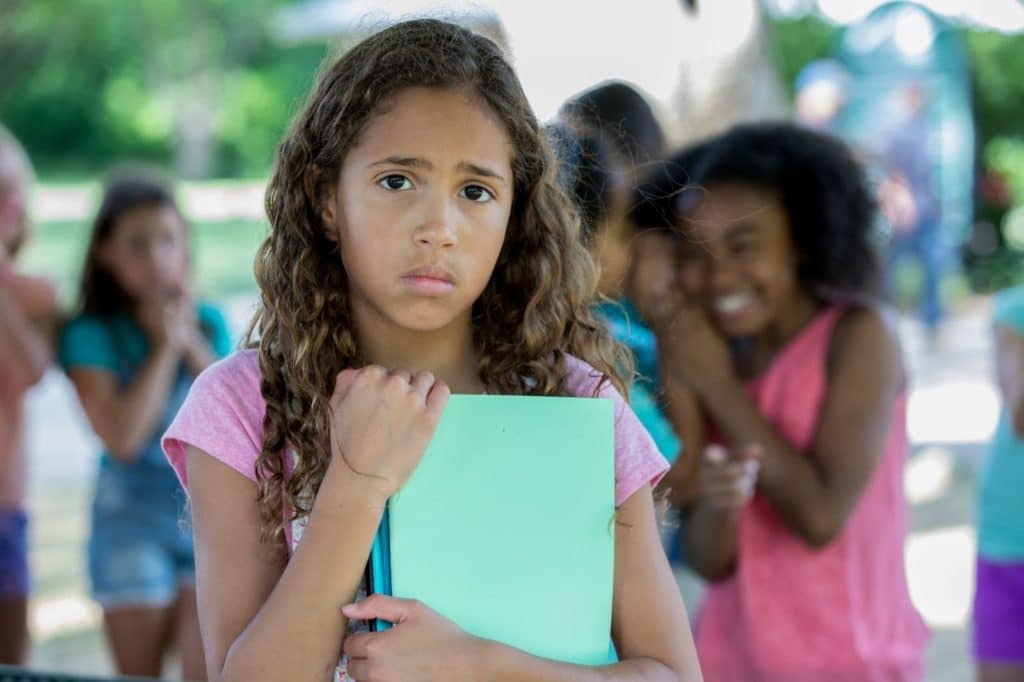Bullying. The mere sight of the word is enough to send shivers down a parent’s spine. Especially if your child is one out of every four children in the United States that experiences this kind of torment on a regular basis. Even if someone in your own home or family hasn’t been personally impacted, we all know someone who has had to deal with its crippling effects.
StopBullying.Gov defines bullying as, “unwanted, aggressive behavior …that involves a real or perceived power imbalance. The behavior is repeated, or has the potential to be repeated, over time.” Dr. Joshua Essery of Clarity Child Guidance Center points out that bullying can look different at various ages and stages of development.
“A pre-school or kindergarten child may steal another child’s dessert and threaten to harm the child if they tell the teacher. In elementary, it may look more like social exclusion, ‘No, you can’t play basketball with us.’ In the teenage years, it can be about humiliation, spreading rumors, or physical threats.” Essery says. “These occurrences are exasperated when it extends outside of the classroom, going online through social media.”
Since bullying can be verbal or occur online, children don’t always come home with physical scrapes and bruises to notify parents that there’s a problem. So what steps can parents take to discover whether or not a bully has their child in his/her sights?
The first step is to clearly communicate with your child to make sure they know what bullying is, what it feels like and what it means. As StopBullying.Gov points out, “kids that know about bullying can better identify it.”
Dr. Essery recommends asking specific questions to children about their day, “What was something good that happened at school today,” and “Did anything bad happen?” StopBullying.Gov suggests additional questions like, “Who do you sit with at lunch? What’s it like to ride the school bus? And, “What kinds of things do you talk about with friends?”
Asking about their day-to-day life in that particular fashion allows the child to better break their day into relatable portions.
If your child or adolescent isn’t communicating, but you still suspect there’s an issue, Dr. Essery says your child’s behavior can help tell a story – even if your child isn’t talking.
“Are their grades slipping? Are they as engaged in their activities as they usually are? Do they suddenly have a new set of friends? Are they withdrawing? Has their weight increased or decreased? Are they sleeping regularly? Have their grooming habits changing?” Any of those behaviors can be indicators that something is wrong.
Once you’ve determined that there is a problem, there are some specific steps you can take to help prevent the bullying from happening again.
Notify the school immediately to make sure there is a record of the incident. MySa.Com also recommends filing a police report each time a child is threatened. Doing so creates “a trail that shows a series of events, rather than a single incident. It also means you don’t have to try to recreate documentation later from memory.” Additionally, once you have a police report and case number, “…contact your child’s school and provide them with the details and police case number. It is important, according to the police, for the school to have a written record so they cannot claim they were not made aware of the situation in case it escalates in the school environment.”
When it comes to preventing bullying, Dr. Essery emphasizes, “The most immediately effective actions are often environmental ones.” This can look like anything from rearranging school schedules, increasing adult supervision, minimizing unstructured social activities, altering extracurricular activities to taking away phones, changing emails or phone numbers, and if necessary, even changing schools.
On the other hand, this could also mean introducing new social activities with a different peer group, finding new hobbies that the child enjoys and spending more quality time with your child. Dr. Essery says, “While we want to minimize the negative experience of being bullied in the short term, we also want to foster the child’s emotional development, self-esteem and increasing independent identity through interaction and pro-social experiences.”
If after filing appropriate reports, contacting the school and making environmental changes, the negative incidents don’t stop – caretakers must take additional action. It’s crucial you seek out professional help for your child to help ensure they grow into the thriving and successful adult that they are meant to be.










